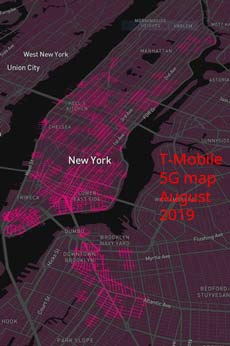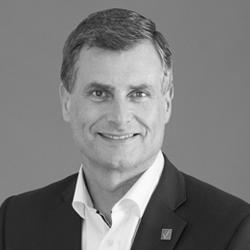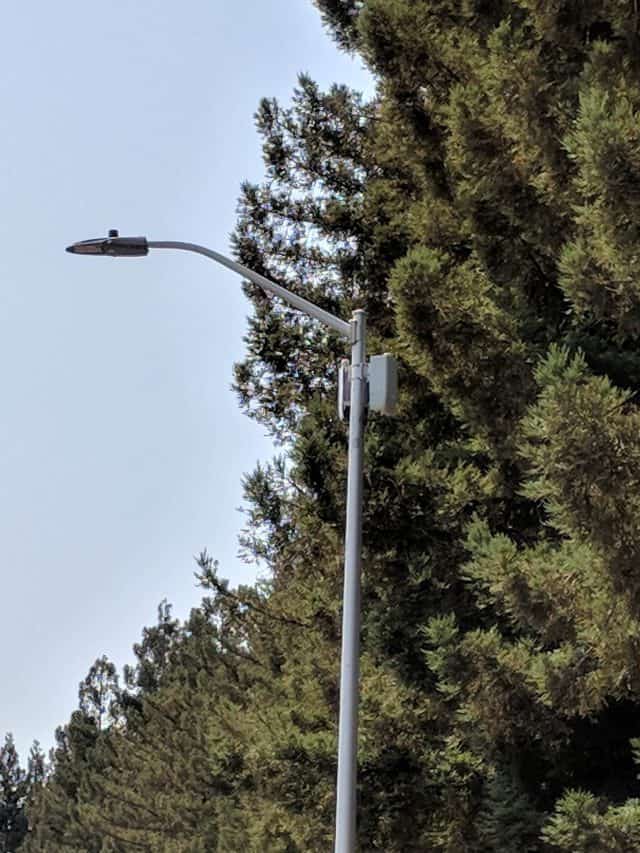
A Verizon 5G small cell installed in Sacramento. (Image courtesy: ZoraQ)
Consumers hoping for the imminent arrival of a “cable killer” from Verizon’s new millimeter wave 5G fixed wireless broadband should not hold their breath.
Verizon executives have been paraded out to celebrate its debuting 5G service as “revolutionary/game changing/transformational” at the same time Qualcomm, which helped define the forthcoming 5G standard claims it will be “as transformative as the automobile and electricity.”
But the ‘Revolution of 5G’ will not be the next fall of the Berlin Wall or Arab Spring. Those revolutionary changes happened almost overnight. Instead, 5G will be quintessential American capitalism at work: overhyped promises to excite the public and attract investors, tempered by the reality that massive amounts of money and at least a decade of work will be needed to blanket only parts of the country with small cells and the newly ubiquitous fiber optic networks required to connect them together.
Verizon already offers hints of that reality, but only in the fine print where it acknowledges its wireless home broadband replacement service, set to launch on October 1, will be only available in parts of four U.S. cities. Verizon isn’t saying what percentage of Sacramento, Los Angeles, Houston, and Indianapolis will be covered, but enthusiastic would-be customers are crowdsourcing their own coverage maps, and the results are underwhelming.
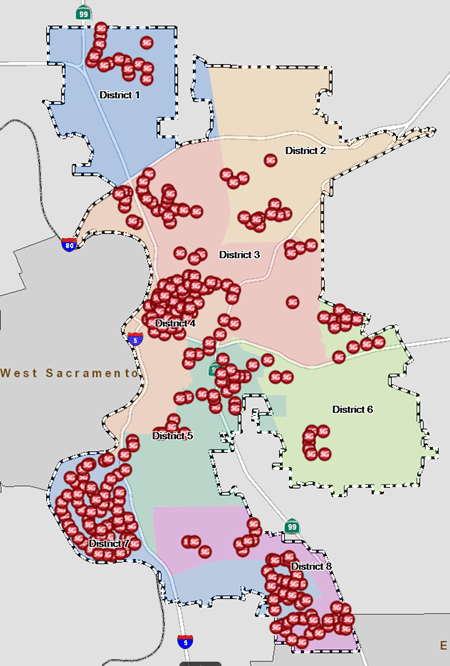
The City of Sacramento released this map showing Verizon’s planned 5G coverage in the city, but customers dispute it. (Image: City of Sacramento)
“Lightning has hit more homes than Verizon 5G will in Sacramento,” reports Jack Del Vecchio, who spent an hour entering addresses on Verizon’s website looking for service. “The city of Sacramento, trying to placate homeowners worried about more cell equipment visually polluting the city, released a map where Verizon claimed it would be offering 5G service by the end of 2018. That clearly is not happening, at least not yet, because most of these neighborhoods do not have small cells installed yet.”
In Indianapolis, reddit user rycummin_IU scanned almost 17,000 addresses and found Verizon service available to just 179 homes and businesses. Only a fraction of customers in Houston and Los Angeles are qualified for service as well.
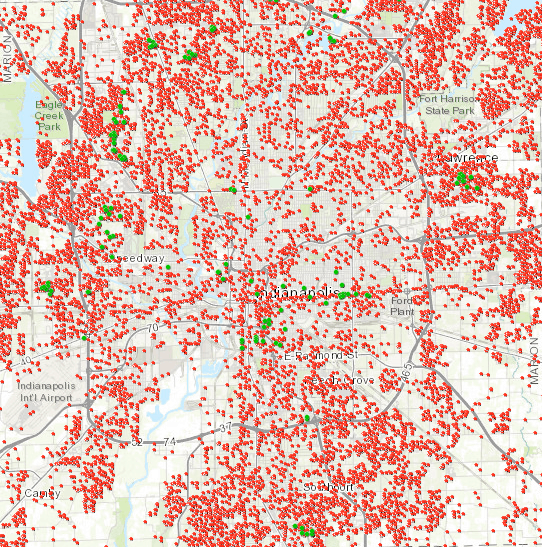
The vast unavailability of Verizon 5G service in Indianapolis. (Image courtesy: rycummin_IU)
“When they said Houston would be part of the rollout I didn’t think they meant one street,” commented another reddit user. In reality, Verizon 5G will debut in parts of low-income neighborhoods like Acres Home, Gulfton, Second Ward, Third Ward and Near Northside, at the behest of city officials, among a few others. But availability is very scattered, and based on search results, Verizon is only qualifying customers that live within approximately 500 feet of a small cell antenna.
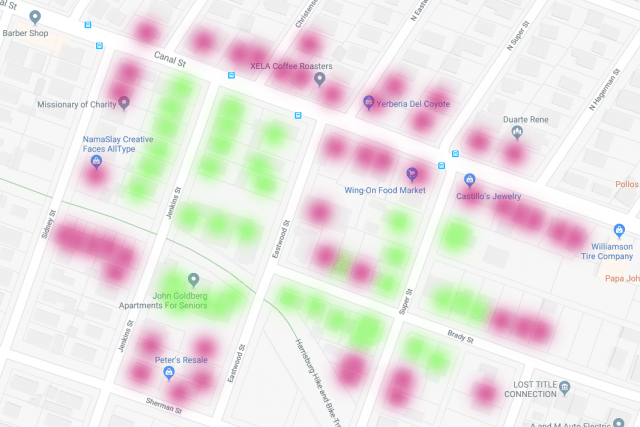
This map shows the limited range of Verizon 5G small cells. In this case, this neighborhood is likely served by one or two small cells, probably in the vicinity of Sugar and Brady and/or Eastwood or Jenkins St. Notice coverage is often unavailable across streets. (Image courtesy: SmokeyTuna)
The most unlikely choice for limited range 5G is notoriously sprawling Los Angeles, and frustrated residents reported service was least likely to be found there.
“I spent 30 minutes plugging in random addresses all over Los Angeles and I finally found one that works,” reports reddit user chantasic. “It’s the big apartment building at 1108 7th Street, Los Angeles, CA, 90017 in [downtown Los Angeles]. If you go just one block west from there on Garland Ave, it’s not available. If you enter in ‘1127 Lucas Ave Los Angeles, CA 90017’ which is a high-rise, then it starts asking you what floor you live on and whether you have any windows that face 7th St. So one of the antennas must be on 7th St.”
“I put in my work address and it worked at 555 South Flower street, which is across from the library on West Fifth Street,” shared another user. A third reddit reader in Los Angeles managed to track down service at Medici Apartments, a complex next to the 110 freeway in the South Westlake area.
Those customers who are lucky enough to live in a qualified service area report the sign-up process to be orderly. A full credit check is done on prospective customers, and assuming one passes it, an appointment for “white glove” installation is scheduled. Verizon has confirmed no self-install option will be available for the time being. Verizon’s installers are trained to find the best possible place to install its 28GHz antenna, which does not perform well penetrating heavy foliage, certain building materials, and low-energy insulated window glass. Verizon plans to monitor the performance of these early 5G installations to gather more information about how the service is working and how to get the best performance from it.
Verizon has released terms and conditions for the service and provided more insight into the installation process, which takes several hours. Customers interested in more information can call this special Verizon 5G hotline — 1-866-217-2223 to order and schedule installation, or find out about 5G Home.
Verizon 5G Home Terms of Service
Two pieces of 5G Home equipment will be installed at your home:
- Indoor or outdoor 5G receiver
- 5G router
The type of receiver (indoor or outdoor) you get depends on the 5G signal strength. If needed, Wi-Fi extenders will be installed in the home, at no charge, to ensure adequate Wi-Fi coverage for the entire house.
What will happen during the 5G Home installation?
An Asurion (third party contractor) technician will complete the following installation process for your 5G Home service and connect your devices:
- Verify and explain the areas in your home where the 5G signal is received.
- Conduct a test to determine whether the 5G receiver can be installed inside or outside your home. The strength of the 5G signal can vary inside and outside your home.
- Conduct a test of the Wi-Fi signal strength of each device throughout the house that is connected to the 5G Home router. A Wi-Fi extender may also be installed at no charge to strengthen the Wi-Fi signal throughout your house or for devices that have a weak Wi-Fi signal.
- Install the receiver, with your approval, either inside or outside on the side of your house.
- Depending on the locations of the receiver and the router, the technician may need to run wires through walls, floors or ceilings.
- Ensure that all your previously Wi-Fi connected devices are now connected to your Verizon 5G Home router.
- Demonstrate how you can use the My Verizon app to manage your router, such as how to restart it when you are away from home, and check the signal strength of the devices connected to the router.
Service Availability. Unfortunately, we can’t guarantee that our 5G Home service will be available at your address, even if we accepted your order. The 5G Home service does not support static IP addresses.
Equipment. We’ll provide you with equipment, which may include an indoor or outdoor receiver, a router, a Wi-Fi extender, and other equipment, to use with your 5G Home service. That equipment will continue to be owned by us, and you can’t use it for any other purpose, move it to a different location or position, tamper with or intentionally damage it, or allow anyone else to service it. We will repair and maintain that equipment at our expense, unless we determine that you misused, abused or intentionally damaged the equipment, in which case, you will have to pay the replacement cost of it. If any of that equipment is stolen, please provide us with a copy of your police report, so that you are not charged for it.
Installation and Access to Your Premises. We will attempt to install the 5G Home service at the address that you provided to us at the time of sale. From time to time, we may access your outdoor receiver to service, inspect, upgrade and/or remove it. If 5G (or 4G LTE backup) coverage is not available at your address, or if we cannot perform installation for any reason, then we will cancel your order.
Changing Service Location. You may not move the 5G Home service to another address. If you are moving to a new address at which the 5G Home service is available and you wish to continue using it, then please contact us to install it at your new address.
Service Cancellation and Equipment Returns. Upon termination of your 5G Home service, you should return the equipment to us in an undamaged condition (subject only to reasonable wear and tear) within 21 days after service cancellation, or you may be charged an unreturned equipment fee, which may be substantial. If you don’t cancel your 5G Home service, then your service charges will continue to apply, even if you return the equipment. If we ask you to leave the outdoor receiver in place, you will not be charged an unreturned equipment fee.
 The FCC is likely to delay for up to two years a massive $9 billion subsidy program that will provide 5G wireless service in rural America because the agency’s broadband coverage maps are too flawed to credibly determine where the money is needed.
The FCC is likely to delay for up to two years a massive $9 billion subsidy program that will provide 5G wireless service in rural America because the agency’s broadband coverage maps are too flawed to credibly determine where the money is needed.

 Subscribe
Subscribe Nearly two-thirds of counties in the United States have real world wireless download speeds below the Federal Communications Commission’s minimum to be considered broadband — 25 Mbps. In rural counties, the number is even higher: 77% cannot get reliable speed at or above 25 Mbps.
Nearly two-thirds of counties in the United States have real world wireless download speeds below the Federal Communications Commission’s minimum to be considered broadband — 25 Mbps. In rural counties, the number is even higher: 77% cannot get reliable speed at or above 25 Mbps.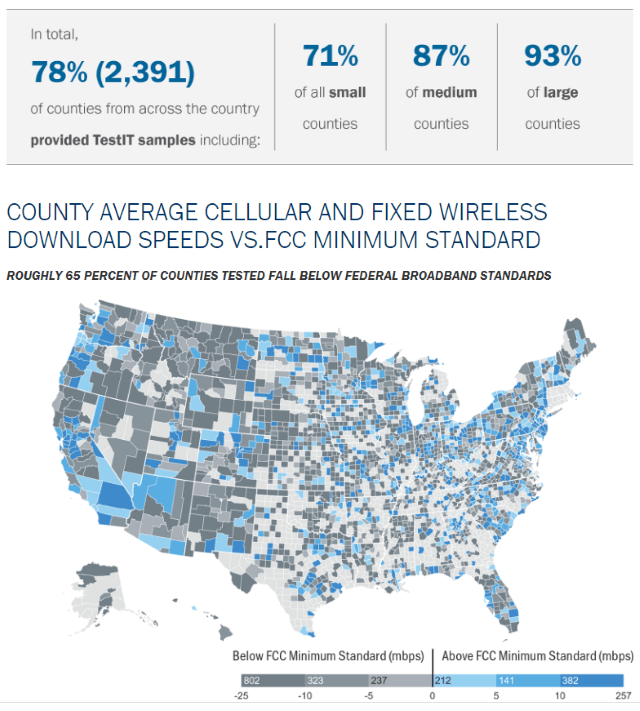
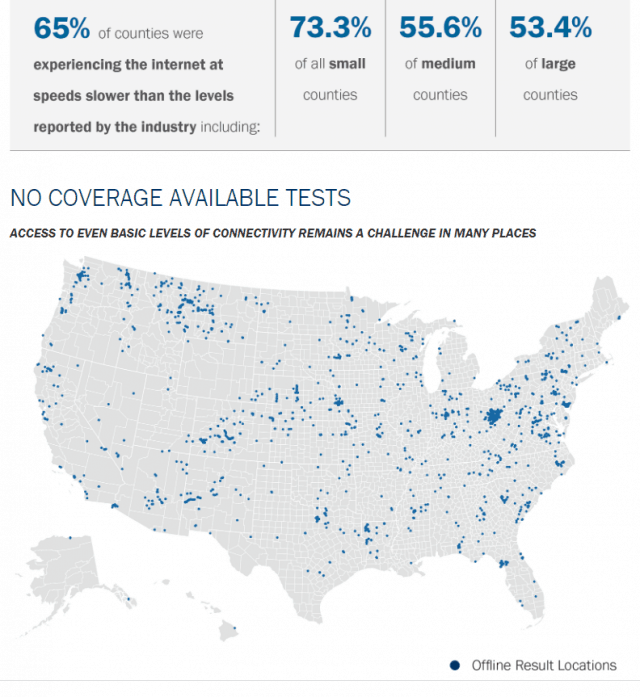
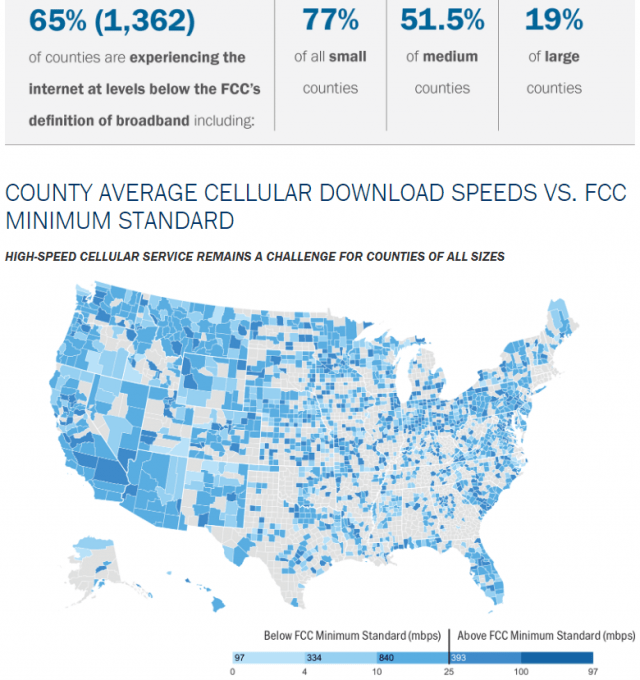
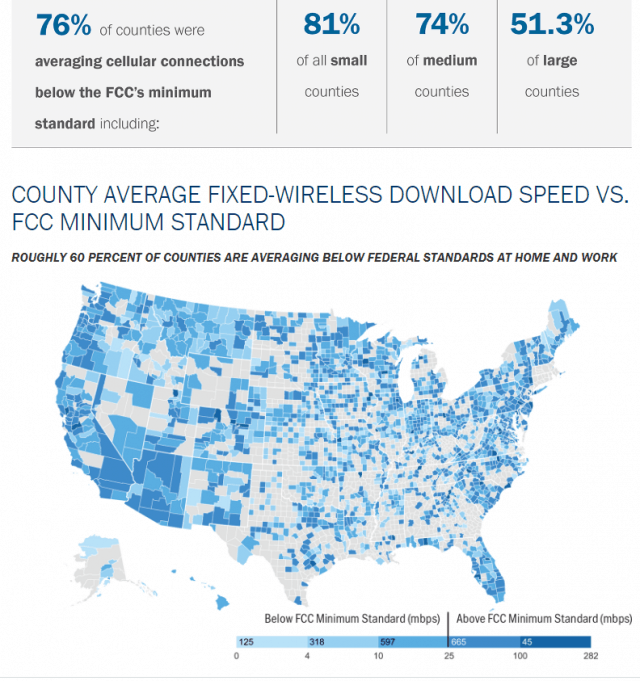
 Sen. Joe Manchin (D-W.V.) wants every West Virginian to test their internet speed and send his office the results to ferret out deceptive service maps and uncover more information about the state’s ongoing broadband problems.
Sen. Joe Manchin (D-W.V.) wants every West Virginian to test their internet speed and send his office the results to ferret out deceptive service maps and uncover more information about the state’s ongoing broadband problems.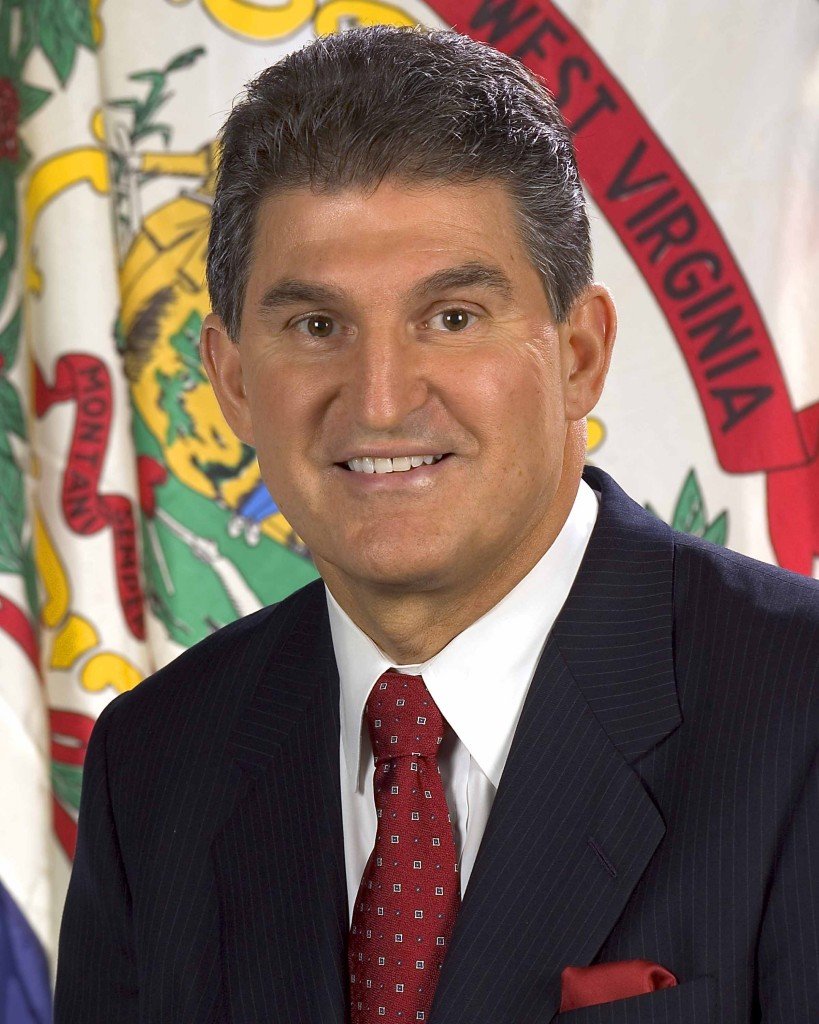
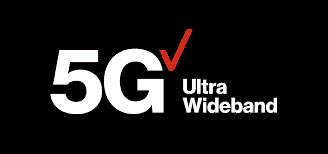 Verizon and T-Mobile are redlining their up and coming 5G wireless services to target wealthy neighborhoods and business districts while shunning the urban poor.
Verizon and T-Mobile are redlining their up and coming 5G wireless services to target wealthy neighborhoods and business districts while shunning the urban poor.